There is nothing worse for a parent than having a sick child. There is no sleeping when the germs are having their way with our kids. And as a reward for our care, we parents get a dose of the same sickness after our kids are through with it. Can someone please remind me why I wanted so badly to be a mom?
Whenever I come across someone twittering about their kid being sick, I am filled with so much empathy for their plight. I know how it feels to look helplessly at a fevered, coughing, snot-runny, crying child and not have a magic wand to wave it all away. I’m going through that right now.
My daughter had a slight sniffle on Friday morning, and though I felt conflicted, I brought her to her dentist appointment for a filling. (I feel very badly about this. I don’t know anyone who has ever had a filling on a milk tooth. I feel so stupid, and scammed! Worst of all, I have to face the fact that my 5 year old now has something in her mouth every day that weighs on her immune system even just the slightest bit. All because I was a schmuck who didn’t think it through clearly enough before everything was said and done. After all the reading I’ve done about questionable dental practices, I still got sucked into signing my kid up for it. But I digress.)
Everything was fine over the weekend. Monday she went to preschool and had a playdate with a friend and her little one-year-old brother after school. Wednesday, she woke up with a cough, her friend was absent from school. Thursday morning my daughter woke up with a fever. I kept her home.
The most valuable resource I’ve ever gotten prior to giving birth was Aviva Jill Romm’s book, Naturally Healthy Babies and Children: A Commonsense Guide to Herbal Remedies, Nutrition, and Health. The first of Six Steps of Healing, “Step 0: Do nothing to interfere; observe. Recognize and observe the processes taking place. Allow the processes to unfold.”
I’ve always listened to my daughter’s body wisdom. From the very first moment I held her in my arms and watched her suckle instinctively, I was constantly amazed at what she knew about her body. I was humbled, and tried my best not to get in the way by imposing what I thought she was supposed to do. I did not adhere to any feeding schedule. She ate when she was hungry and didn’t when she was not. I believe that eating disorders begin when our own basic instincts are supplanted by messages from the outside, whether it’s mother imposing feeding schedules and quotas, or later on mass media telling us we are too fat. We grow up not trusting our own instincts, tossed about from fad diet to fad diet, unhealthy, unhappy, out of touch with our own bodies.
So I listen to my kid, long before she learned to talk, and I don’t see myself changing soon. As soon as she learned to talk, we taught her the word, “symptoms.” Every time she complained or cried about pain, we asked, “What are your symptoms?” She’d say her head hurts, her nose is runny, her throat hurts… all very helpful clues to a parent, and educational for a child growing up in touch with her body and all its functions.
Doing nothing is the hardest thing. A crying child is a siren of alarm and I don’t know any parent who can sit there without a twitch. In my 5 years of being a mom, I’ve found 5 Ways of “Doing Nothing” when my child is sick. Let me share them with you.
1. Touch. We all have the gift of healing hands. How many times have we instinctively clutched our bellies during a stomach ache, or massaged our temples when we have a headache? I lay my palms on my child and my touch alone comforts her, relaxes her enough to be clear when she talks to me about her symptoms. I ask her if she’s comfortable, if my touch makes her feel better, if she’d rather I touch her elsewhere. Last night for instance, I had my hand on her forehead, and she told me she’d rather have my hand on her neck. Touch aids communication. Touch is communication.
2. Healthy food and water. No matter what it is that ails our children, lots of water and healthy foods will help their immune systems heal them. Carrots and fruits are some raw foods that children already like to eat, so there’s no coercion needed. I like to serve soups at mealtimes because it’s healthy and hydrating. Best ingredients to put into soups for sick people are shiitake mushrooms and leafy greens to support the immune system. When my daughter was still breastfeeding, I made sure she had my milk as often as she reached for it. Not only did it aid her immune system, it also kept her hydrated. Avoid anything fried, dairy or sugar.
3. Warm washcloth. Aviva Jill Romm wrote it best in her book, Naturally Healthy Babies and Children: A Commonsense Guide to Herbal Remedies, Nutrition, and Health, “Fever is not an illness. It is a process occurring as a response to infection and a signal of illness. It is not the fever itself that needs to be eliminated. Rather, the task is to support and nourish the child while the body does the work of eliminating infection, regaining equilibrium, and healing. In fact, fevers may be important in the body’s fight against invading organisms by stimulating the immune system and creating a body temperature inhospitable to bacteria.” I have never given my child medicine to reduce her fevers. I work with a washcloth and water, as hot as I can take it, and I hold it on to her forehead. As the washcloth cools slowly, so does the fever in her head subside.
4. Echinacea. A tincture of echinacea is an over the counter herbal remedy for supporting the immune system. Our medicine cabinet is always stocked with it. I squeeze a few drops in water in a shot glass, depending on directions on the label. My daughter actually likes the taste of it.
5. Zap. Zapping has to be the best kept secret to health. The concept and practice of zapping has been studied and documented for over a hundred years beginning with Nikola Tesla in the 1900s. In a nutshell, a zapper is a device that emits a frequency which resonates throughout the body to shatter bacteria, viruses and germs, much like a singer shatters glass with the right pitch and frequency.
Despite the zapper not being acknowledged by the FDA and the medical establishment, I’ve been using the zapper since I came across it in 1997, with satisfying results. My daughter does not know life without it. Zapping doesn’t feel like anything, there is no electrical jolt or buzz. It’s the ultimate in doing nothing because you just sit there holding the electrodes while doing, well, nothing. I believe it works because symptoms are relieved after use, sometimes dramatically, like with a stomach ache. With colds or flu, it takes a while, but I’ve noticed my family kicks it sooner than most. Cuts that are pink and puffy with infection dry up faster when we zap.
(Disclosure: I am owner/manager of NaturalHealthSupply.com and we sell zappers. In 1999, my husband and I began selling zappers because we believe in them, not the other way around. I feel really lucky to have found the zapper as a solution to many of my health problems. I’ve spoken openly about zapping long before we started selling them. My testimonial above is my own personal experience with the zapper, and is not intended as a medical claim.)
To this day, “doing nothing” has helped my daughter through fevers, coughs, cold, flu, ear infections, cuts and scrapes. When would I consider medical help? Broken bones. Knock on wood.


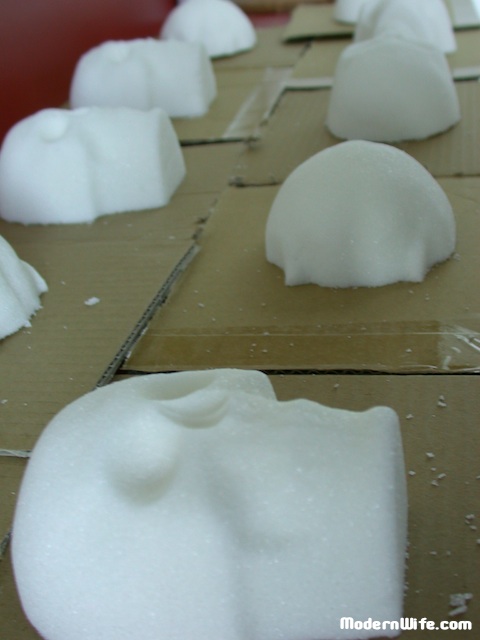
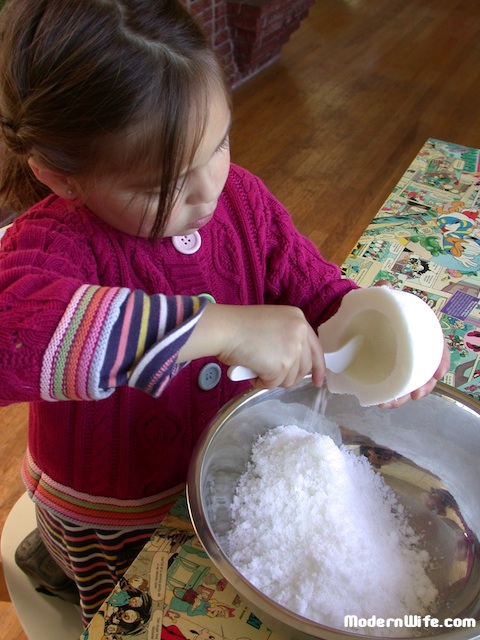





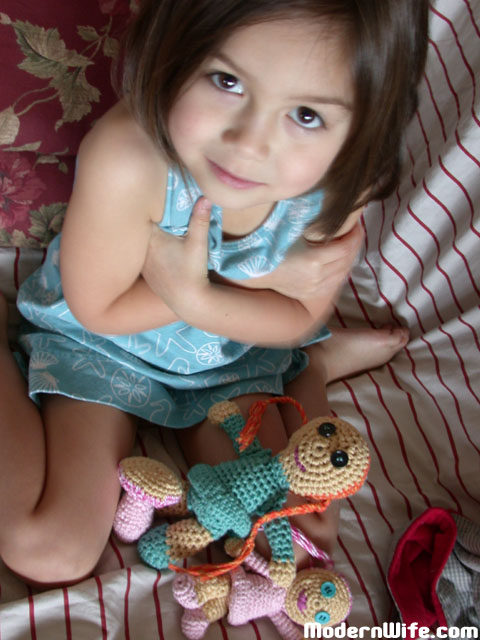






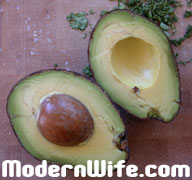 The avocado is one of my favorite fruits. Avocado is packed with nutrients such as folate, potassium, vitamin E and lutein. When in season during the summer months, avocados are always on my weekly grocery list.
The avocado is one of my favorite fruits. Avocado is packed with nutrients such as folate, potassium, vitamin E and lutein. When in season during the summer months, avocados are always on my weekly grocery list. First Solid Food for Baby
First Solid Food for Baby I immerse the flat half of the avocado seed in water, pointed end upwards, and set it on a sunny spot in the kitchen. I’ve made the mistake once of setting it outdoors and the squirrels ate it! Change the water every couple of days, and you may be surprised with some sprouts! When the sprouts are well formed, plant in potting soil with the tip of the seed peeking above the soil surface. Put the plant out on a sunny area, perhaps on a spot the squirrels can’t dig up. Keep the soil fairly moist and with good drainage.
I immerse the flat half of the avocado seed in water, pointed end upwards, and set it on a sunny spot in the kitchen. I’ve made the mistake once of setting it outdoors and the squirrels ate it! Change the water every couple of days, and you may be surprised with some sprouts! When the sprouts are well formed, plant in potting soil with the tip of the seed peeking above the soil surface. Put the plant out on a sunny area, perhaps on a spot the squirrels can’t dig up. Keep the soil fairly moist and with good drainage.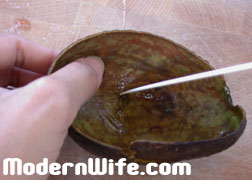 First scrub and wash the inside of the avocado skin until it is clean. Working on a chopping block with the inside of the avocado skin facing you, cut out a couple of eyes, a nose and a mouth. Keep it simple or get creative. Don’t expect it to look like much at first, because the avocado skin needs to dry in the sun for a few days before it shrivels and curls into the gnarly shape of a shrunken head.
First scrub and wash the inside of the avocado skin until it is clean. Working on a chopping block with the inside of the avocado skin facing you, cut out a couple of eyes, a nose and a mouth. Keep it simple or get creative. Don’t expect it to look like much at first, because the avocado skin needs to dry in the sun for a few days before it shrivels and curls into the gnarly shape of a shrunken head.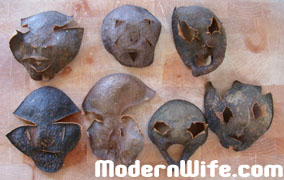


 New Hampshire, the tallest peak on the Appalachian trail (8,000 or so feet elevation). It is also known to have the fastest wind speed ever recorded in history.
New Hampshire, the tallest peak on the Appalachian trail (8,000 or so feet elevation). It is also known to have the fastest wind speed ever recorded in history.